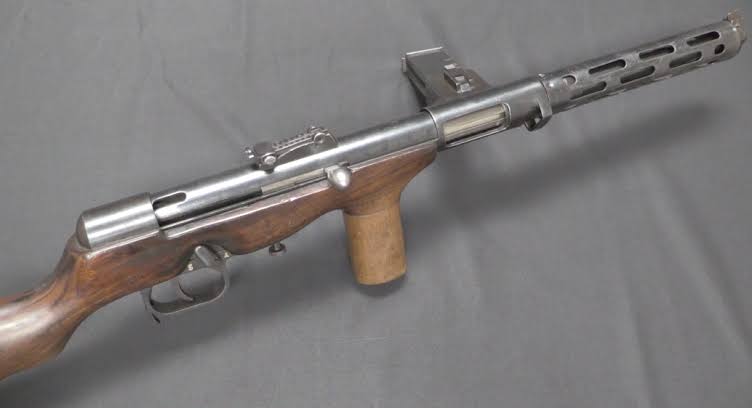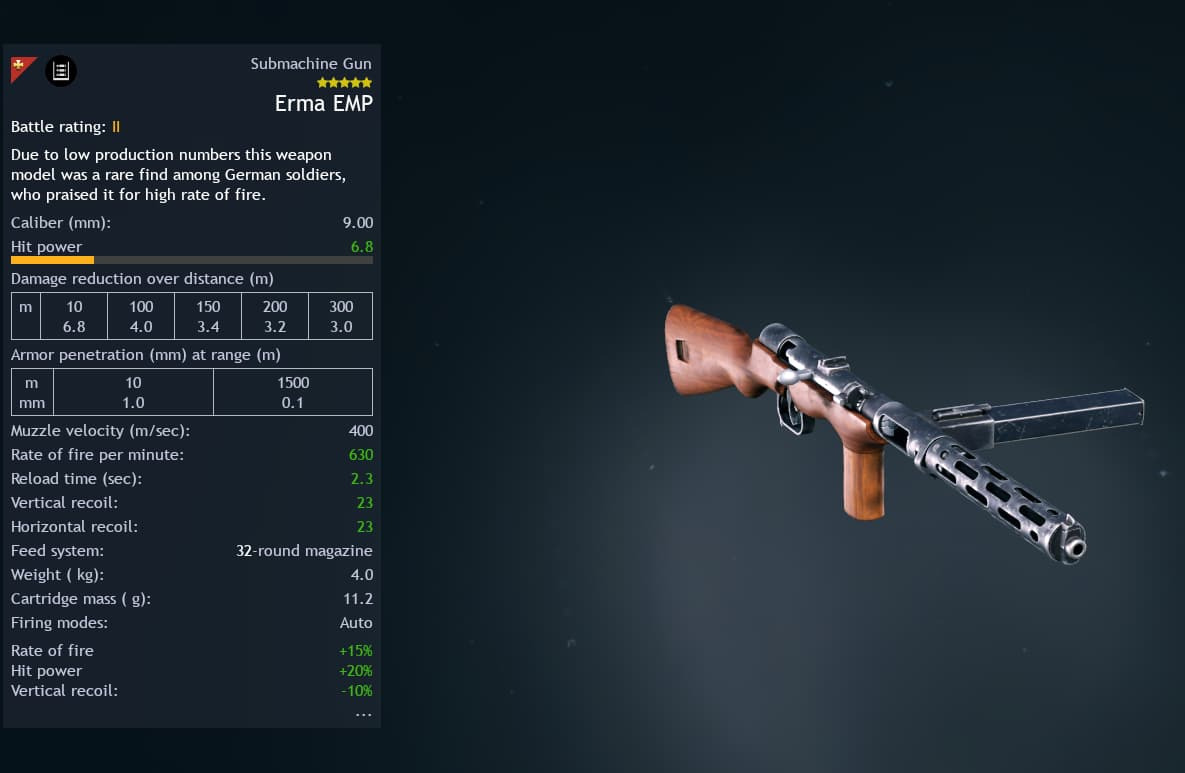

The Spanish-made MP41/44 is a licensed copy of the Erma EMP submachine gun. The development begins with Heinrich Vollmer in 1925, designing a submachine gun for German military testing. The military trials showed a number of flaws in the gun, and Vollmer updated the design to fix them - but by the time he had it perfected his main source of funding (the German government) dried up because of the Great Depression. Vollmer had not been able to get a substantial contract for his guns, so he sold the rights to the design to the Erma company in 1930. Erma was able to market the guns much more widely and effectively, and was able to sell more than 20,000 of them worldwide.
Mechanically, the EMP is not a strict copy of any other guns that were then on the market. It used a double-feed magazine (unlike the Schmeisser-designed guns like the MP18 and MP28), a pretty typical open bolt blowback operating mechanism, and a simple disassembly system which woul be copied in principle for the MP38 and MP40 submachine guns.
The Spanish use of the EMP dates back to the Spanish Civil War, when both the Republican and Nationalist forces purchased them. The design was well enough liked that after Franco’s victory, the La Coruna arsenal arranged a license to produce them in 9mm Largo for Spanish military use. This was designated the MP41/44, the main mechanical difference between the Spanish and German guns is a plunger type safety located between the trigger guard and front grid
Rate of fire:500-600 rounds per minute
magazine size: 30 rounds
It would be an event squadron with Spanish voices from the 101st Kompanie der Spanische Freiwilligen der Waffen-SS
SS-Rottenführer 101. SS. Spanische-Kompanie: The Spanische-Freiwilligen Kompanie der SS was a recruiting unit headed by Dr. Edwin Haxel, who had previously held a liaison position in the Spanish Blue Division. The Spanish company was sent to the Kangfurt training camp in Austria and later to another training camp in Vienna and developed into the 101. SS Spanische Kompanie, which consisted of four Grenadier u. Stabs platoon. The Kompanie, consisting of about 140 men, was sent to the 28. SS-Freiwilligen-Panzergrenadier Division in Pomerania.
Retreating before the Red Army at Stargard, the German forces set up for the final defense of Berlin in April 1945. The Spanische-Kompanie was reassigned to and fought as part of the 11th SS-Freiwilligen Panzergrenadier Division “Nordland” in the ruins of Berlin. The Kompanie became known as Sturmabteilung “Ezquerra”, commanded by SS Obersturmbannführer Miguel Ezquerra



